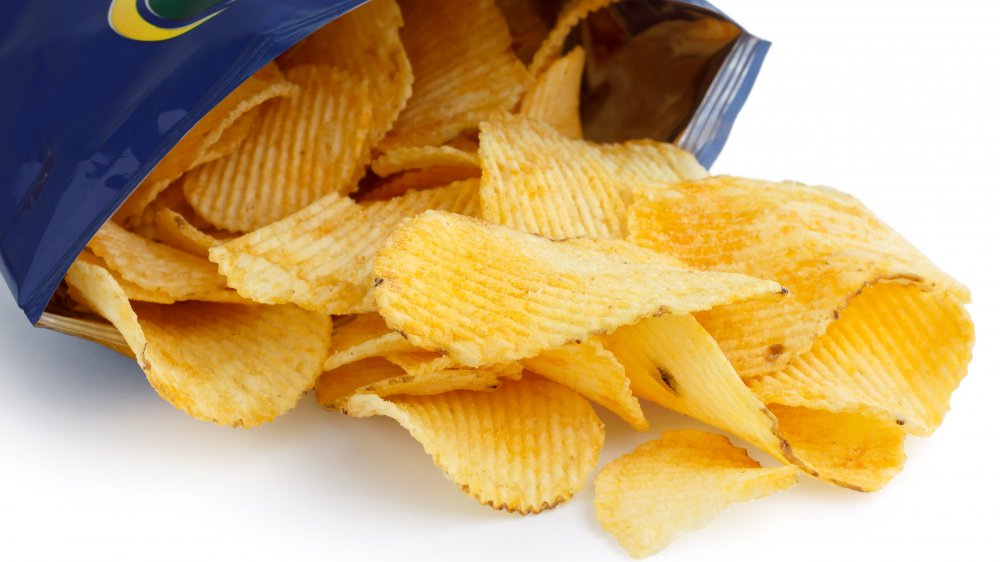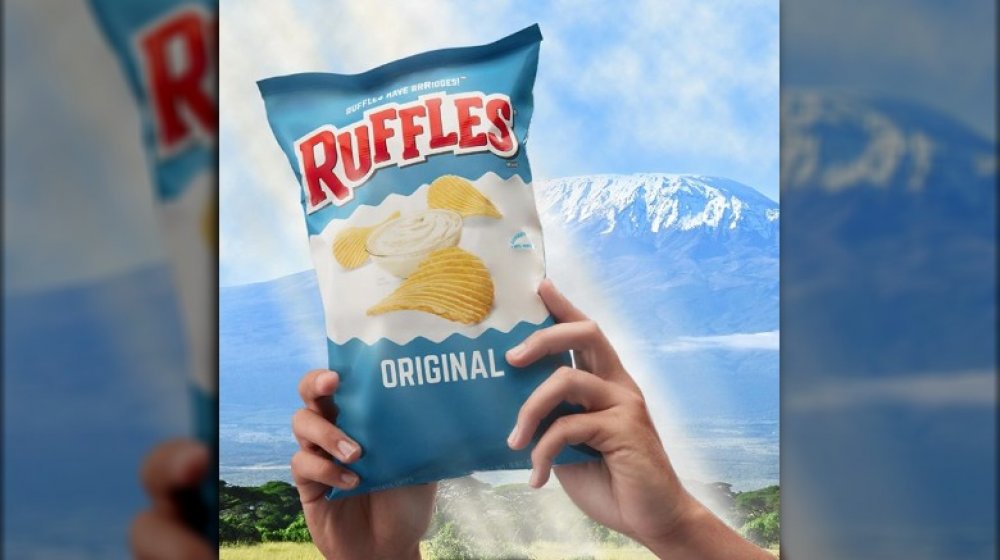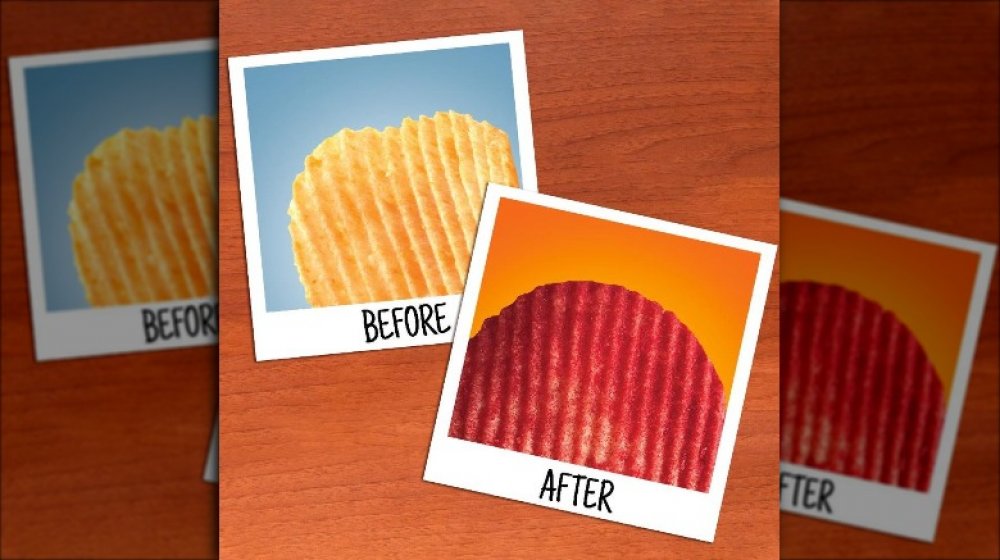The Untold Truth Of Ruffles
We all have that moment when we are craving something crunchy, salty, and nostalgic. For many, potato chips are a snack that is oftentimes synonymous with childhood. Whether it was packed in our lunch box or piled high in a bowl at family gatherings, there was no possible way to just have one potato chip (they're called "chips" for a reason). Ruffles potato chips are one of those iterations of our childhood that stays with us long after we've grown.
Since the inception of this humble chip, Ruffles have come in dozens and dozens of new and inventive flavors throughout the years (via Taquitos). According to the Ruffles website, casual chip eaters and superfans alike can now enjoy flavors like Ruffles Sour Cream & Onion, Ruffles Flamin' Hot, Ruffles Original, Ruffles Cheddar & Sour Cream, and Ruffles Lime & Jalapeno (according to a press release, this flavor was created through the first ever "chip deal" signed with NBA player Anthony Davis); and that's before we even begin to get into Ruffles Double Crunch products. In its long history as a fan favorite, Ruffles has made its mark as one of the top choices among chip eaters today (via The Kitchn and Best Products).
The Ruffles creator could not explain why they taste so good
Rewind and Capture states that Ruffles came to be when creator Bernhardt Stahmer took a page out of the classic style book and applied it to a new snack invention he was making. Stahmer eventually applied for a patent on "sliced, corrugated potato products" in 1955. According to the US Patent on file, Stahmer's application stated that he spent a considerable amount of time and resources to create his new product that would be trademarked and sold under the name Ruffles. In the patent (which was approved on November 6th, 1956) Stahmer stated that his new invention tasted different than the other chip varieties available to consumers. By "slicing the potato product with certain specified dimensions and shape" Stahmer asserted his ruffled chips tasted as if they had cheese flavor added to them, when in fact they did not.
In his patent application, Stahmer likened the effect of the ruffled potato chips to the effect of a bruised apple stating that once the apple is bruised it begins to taste differently. He explained that he was unable to explain with certainty why this phenomenon was occurring with his chips as they were made in the same fashion that all other chips were made and had no added flavors. Stahmer claimed that his invention not only produced a chip that had the very distinctive flavor of cheese to it, but that it was crunchy like other chips as well.
C.E. Doolin, H.W. Lay, and the future of Ruffles
It wasn't long before Stahmer's revolutionary chip invention caught the eye of a budding chip mogul Charles Elmer Doolin and his Frito Company, which had been producing Fritos and Cheetos by that time (via Elko Daily Free Press). According to Rewind and Capture, C.E. Doolin saw the potential in Stahmer's product and purchased the trademark in 1958. In 1961, the Elko Daily Free Press states that C.E. Doolin and the illustrious H.W. Lay combined forces to create the Frito-Lay Company, carrying a robust line of chips such as Fritos, Lays, Cheetos, and Ruffles. A few years later in 1965, the Pepsi-Cola Company wanted in on the chip action and merged with Frito-Lay to form Pepsi Co. This move allowed Ruffles to up their distribution to outside of North America.
Since its inception in the '50s, only two things have changed about Ruffles — the depth of their ridges and how many flavors are available. According to Taquitos, the snack brand has boosted at least 50 different chip flavors through the years, ranging from BBQ-style to extra cheesy to hot wings, ensuring that generations of people everywhere will create childhood memories of snacking on the chips signature ridges.


